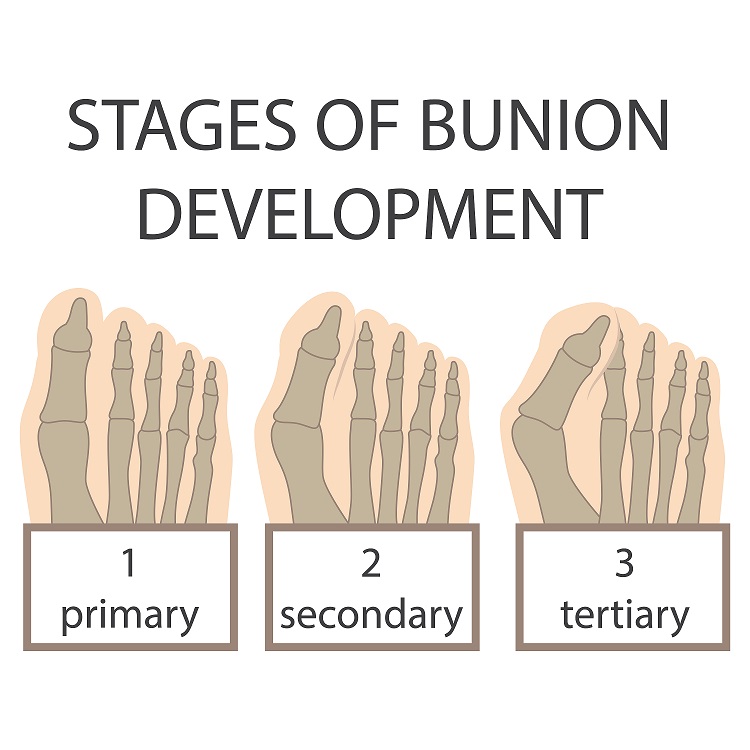Bunions are enlargements on the side of the foot at the base of the big toe which are known for being unsightly and often painful. A bunion generally develops slowly over time, resulting from improper foot biomechanics and stresses on the joints of the foot. As the bunion enlarges, the joint at the base of the toe changes in alignment, creating foot instability.
Bunions develop slowly as a result of changing alignment of the bones in the foot and toe. When a bump develops, it is the result of the movement of the metatarsal bone away from the foot midline. The more the metatarsal moves out, the more the big toe moves in the opposite direction, towards the other toes.
The bump grows over time as the foot continues to change. The metatarsal bone gradually becomes more misaligned, the joint is stressed and arthritic changes develop. Over the bump the skin and tissues are irritated and can become inflamed, resulting in bursitis.
The Podicare podiatrists will exam you bunion and may refer you for xray to see the alignment of the bones and the joints. In the initial stages of bunion formation conservative care can be useful to control the mechanical forces that are causing the bunion. If the bunion is painful they will look at ways to offload it and reduce the inflammation. Read here about how custom silicone toe splint can be used to reduce the pain and deformity of bunions
As a bunion progresses and the joint becomes more maligned , surgery may need to be considered. If this is the case our podiatrists will discuss a surgical referral with you.


